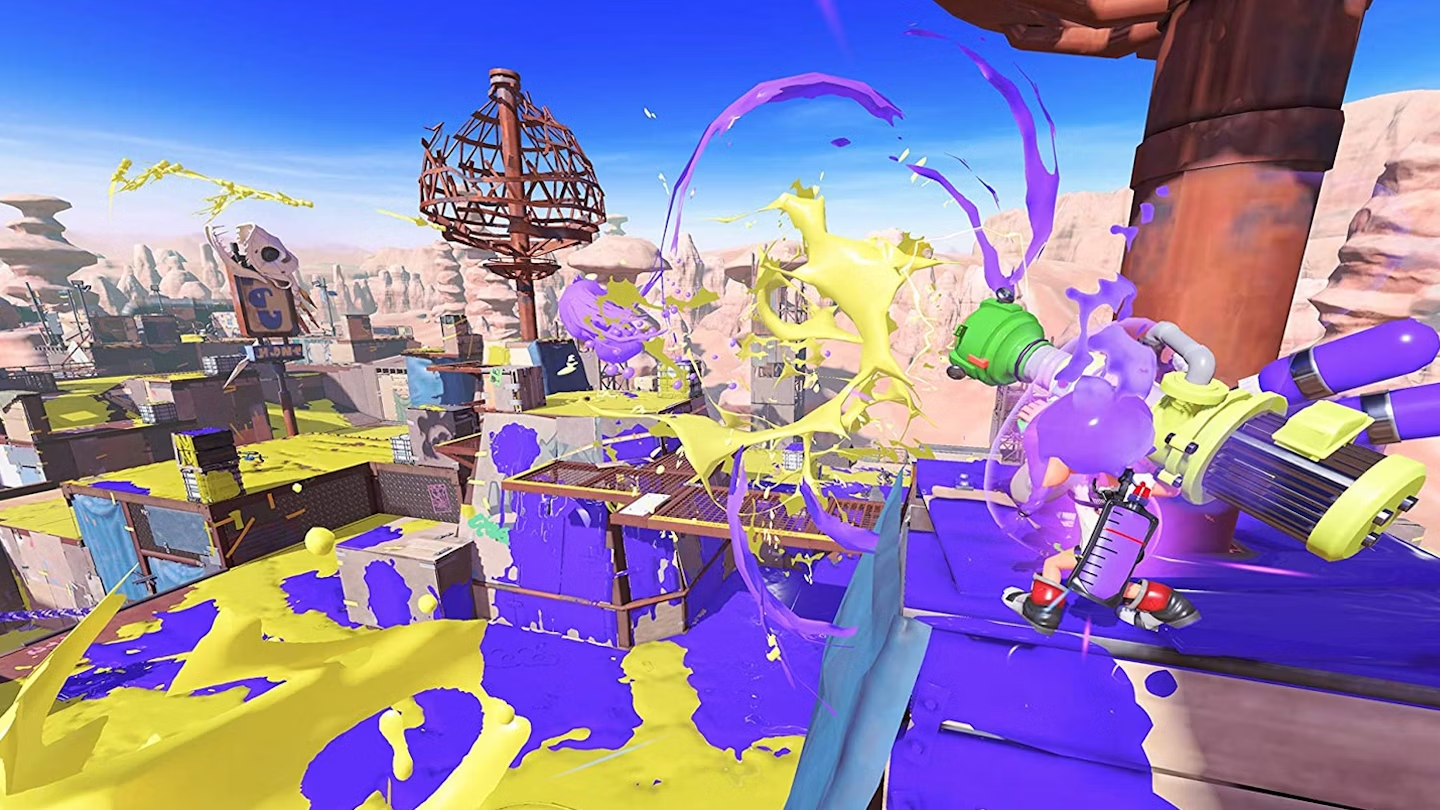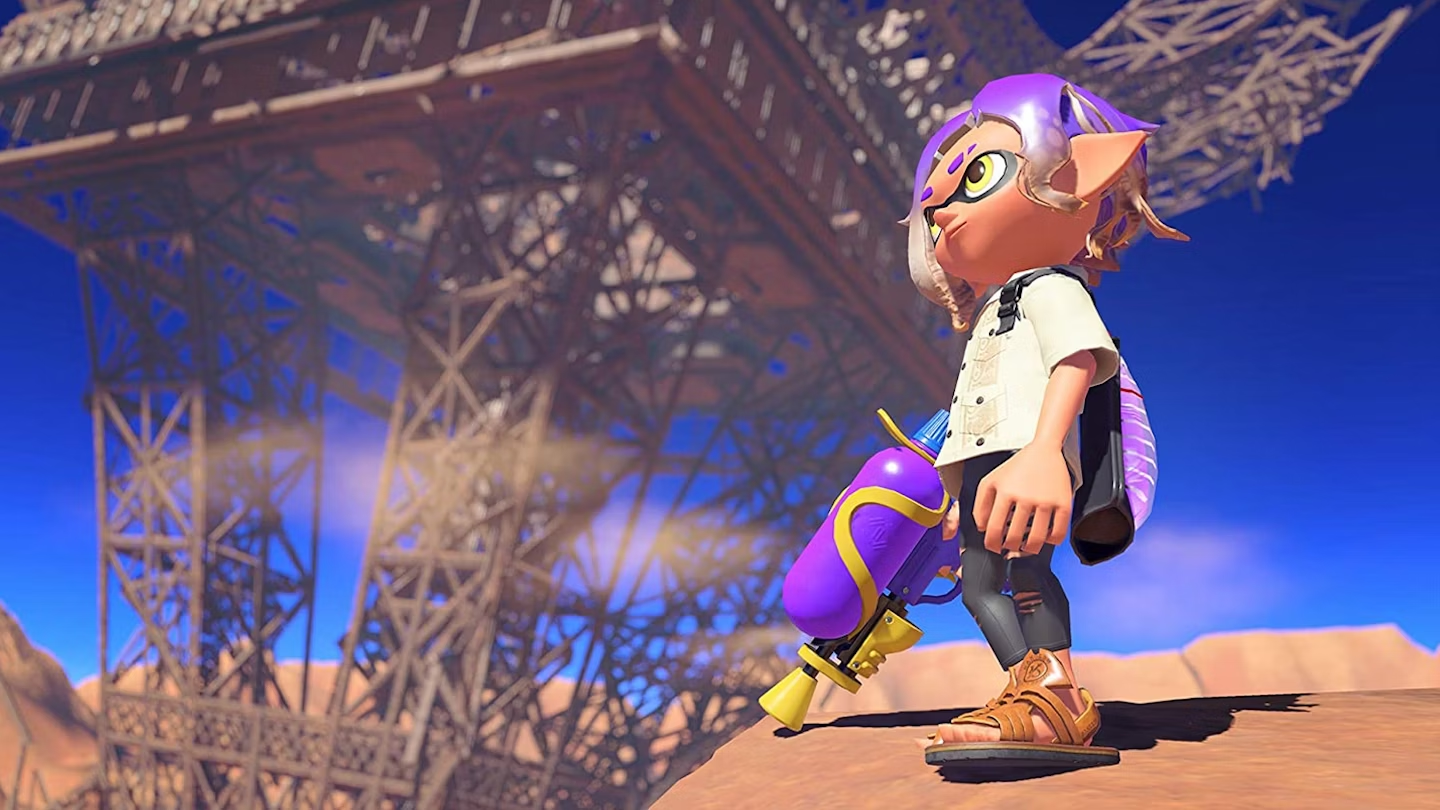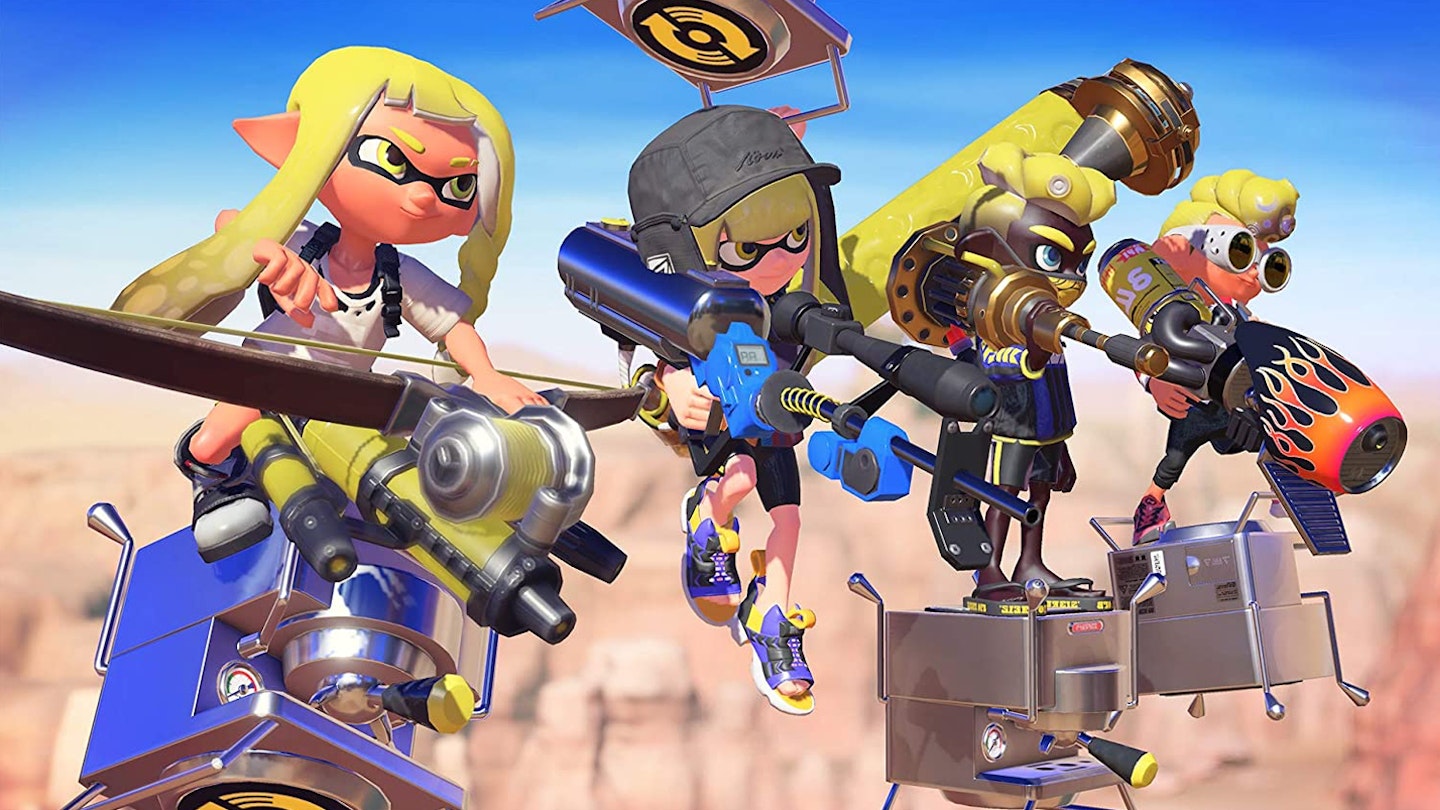Platform: Nintendo Switch
Splatoon is possibly the trickiest franchise for Nintendo to iterate on. Although it debuted on the Wii U back in 2015, where it was overlooked by all but the most committed of the famed developer’s devotees (by virtue of it, well, being a Wii U release) it was already as close to perfect as the series was likely to get. On paper a simple multiplayer squad shooter, Nintendo’s trademark creative weirdness gave everything a family friendly coat of paint – or, technically, of neon ink – as it swapped the genre’s typical bloody battles for an array of zone control skirmishes, fought by anthropomorphic squid-folk who shape-shift to swim through pools of colourful goo.
That first Splatoon was such an immediate distillation of everything great about the genre that both 2017’s Splatoon 2 and this latest entry struggle to differentiate themselves in meaningful ways from the original. Instead, Splatoon 3 offers a handful of tweaks, refinements, and lower scale additions that elevate, rather than overhaul, an already winning formula. Indeed, the biggest difference remains that simply by being on Switch, millions more players are able to discover the simple brilliance of the game.

For the uninitiated, Splatoon 3’s stock in trade remains its Turf War mode, where teams fight it out in three-minute online rumbles, trying to cover the most surface area of an arena in their respective hue of ink. Mixing run-and-gun shooting in humanoid form with ingenious navigation in squid form - able to swim anywhere you’ve splatted with ink, including up vertical surfaces - makes matches far more tactical than the initial frenetic melees may appear.
The new maps introduced for Splatoon 3 also make better use of those vertical navigation skills, with layouts tailored to reward players who take the full 3D space into account, and a new ‘Squid Surge’ move that allows you to zoom through ink at high speed in squid form. Another new movement technique, the ‘Squid Roll’, permits you to burst out of an ink pool from squid form. They’re relatively small changes to the formula, but once mastered, they can have big impacts on the outcome of a match.
The popular Salmon Run mode from Splatoon 2 also returns, offering a cooperative multiplayer experience where teams fight off waves of enemy Salmonids. The big improvement here is that the mode is permanently available, rather than being limited to scheduled events. A few tweaks to formula – the ability to throw Salmonid eggs, or challenges to escort cargo loads of eggs to safety on the battlefield, for instance – also enhance an already great experience.
Splatoon 3 feels more like a series of refinements than a whole new experience.
There’s also a lot more meat on the bones of the single player campaign, set in a new region called Alterna. While still, ultimately, a glorified tutorial for the various weapons and tactics that players can use in multiplayer campaigns, it does offer a deeper story that actively tries to subvert the sense that Splatoon 3 is just more of the same. It doesn’t always succeed, mind, but in between stringing together a series of ingeniously designed challenges that train and test mastery of the game’s various mechanics, hidden objects to uncover, and terrain to liberate from a strange fuzzy ooze, it does also manage to expand the Splatoon universe’s lore in interesting way – often with surprisingly dark undertones, to boot.
There’s an almost RPG-like aspect to the single-player mode too, where you’ll upgrade your player-created character’s skills, but it’s one of the more frustrating elements of Splatoon 3. Essentially it requires two in-game currencies to unlock new skills, Sardinium to open up ‘cells’ of new abilities, and Upgrade Points with which to actually buy them. The problem is that the latter are earned for just about everything you do, including simply spraying ink about, while the former are vanishingly rare. The result is, you’ll have a surfeit of points to spend on upgrades, but the upgrades themselves are locked off due to a dearth of Sardinium. Thankfully, it’s a problem that’s limited only to the single player mode, but it’s still an annoyance.

The most significant brand new addition to Splatoon 3 is the Table Turf Battle, an in-game collectible card game. Cards are found throughout the single player campaign, and the mode itself is an interesting twist on the core Turf War concept of claiming territory. Rather than splatting opponents though, you’ll lay cards of different shapes onto a board to cover the most space. It’s simple enough to grasp, but an element of Tetris-style shape-matching means the 12-turn matches can become surprisingly complex.
Beyond that, Splatoon 3 really does feel more like a series of refinements than it does a whole new experience. The online lobby now allows you to test out weapons and arrange teams with friends; the assortment of weapons is itself expanded with some truly fun additions such as the Tri-Stringer, a bow-type weapon that fires three shots simultaneously, with charged shots exploding a second after embedding into surfaces; and it’s now possible to skip the intro broadcast when booting up the game, informing you of the maps currently in rotation. They’re all very welcome refinements, improving elements of the game that the Splatoon community has complained about for years, but nothing that's materially different.
Which brings us back to Splatoon as a concept being practically perfect first time around. It’s a testament to Nintendo’s designers that, seven years on, all the core game really needs is a proverbial nip and tuck, but it also means any new entry is going to feel like a variation on a theme. Five years on from Splatoon 2, and with no hardware boost to take advantage of, players may expect more from a brand new instalment, but it’s hard to imagine what else Nintendo could have improved here. Ultimately, this is more of the same, but in the best possible way.
